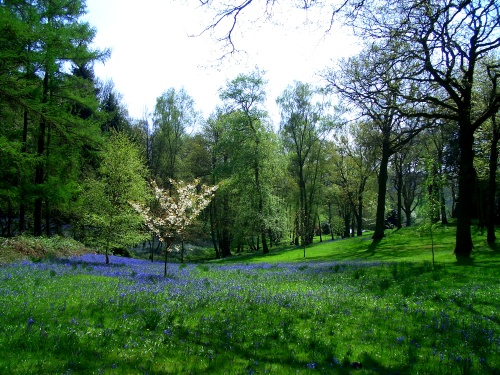
Notes

1. Aprille with his shoures: [Professor Skeat notes that 'April is here masculine like the Latin Aprilis,' and compares 'Zephirus' in 1. 5; but as his in Chaucer's time was the neuter, as well as the masculine, genitive, there is no evidence that Chaucer here personified either the month or the wind as a masculine.]
2. to the roote: not an adverbial phrase (radicitus) equivalent to 'hath thoroughly pierced,' but (usque adradicem) 'to the root of each plant or tree.'
4. Of which vertú: Chaucer might have written ‘in swich licour of which,’ or 'in swich licour that of his vertu,' but he uses 'of which vertu' not strictly after 'in swich licour,' but loosely in relation to the sentence—' in such moisture, that from this vitalizing power the flower is begotten.' The 'virtue' of a thing is its special property, what it is efficacious for. In 1. 307 'vertu' has our modern pronunciation and modern meaning; here it must be accented 'vertú.'
7. the yonge sonne, the astrological year began with the entrance of the sun into the sign of Aries or the Ram on March 12 (old style); in April, therefore, the sun was still 'young.'
8. the Ram. See Chaucer's Astrology, § I.
his halfe cours: The course of the sun in Aries or the Ram began in Chaucer's time on March 12th and ended on April 11th. The first half course was run in March. From 1. 5 of the talk which begins the story-telling of the second day we learn that it was then
| "the eightetethe day Of April that is messager to May." |
If the second day of the pilgrimage was April 18th, the pilgrimage began April 17th and the company assembled April 16th. Thus, as a matter of fact, the story begins five days after the completion of the sun's April half course in the Ram; but in the present passage, save that the opening lines point to April showers having had time to do their work, there is nothing to show to which 'half course' Chaucer alludes.
12. Thanne, then; answering to 'whan' in 1. I.
13. Palmeres, originally pilgrims to the Holy Land who brought thence a palm branch as a token of their journey. The name was afterwards given only to such pilgrims as wore a distinctive dress, went from one holy place to another, and begged on their way, instead of, like Chaucer's pilgrims, making a holiday excursion to a single shrine at their own expense.
[It is usual either to print this line as a parenthesis or to put only a comma after strondes so as to make To ferne halwes follow to goon. The punctuation here adopted was proposed by Professor Liddell and seems an improvement, despite the fact that it makes us want wende at the end of 1. 14 rather than 16.]
15 sqq. See Introduction.
18. That hem hath holpen, who has cured them. It was common for sick persons to invoke the prayers of a saint on their behalf and to vow that they would make a pilgrimage to the saint's shrine should they recover. For the rhyme seke, seeke, see Introduction.
20. In Southwerk at the Tabard: see Introduction.
22. corage, disposition. We are not tempted to misunderstand corages in 1. 11, but here 'courage' would give a seemingly possible, though wrong, meaning. The real pitfalls in reading Chaucer are the words we still use, but in a different sense. Cp. note to 1. 43.
24. Wel nyne-and-twenty. The number of pilgrims mentioned in the Prologue is 31; but see note to 1. 164 and Introduction.
30. was to reste. To here has the force of the modern at. The use survives in the Americanism 'to home' for 'at home.'
33. erly for to ryse, cp. 1. 822. They must have started early indeed, for the Tales of the Knight and the Miller are supposed to have been told, and Deptford to be in sight, by 'half-way pryme,' i.e., by about 7.30 a.m. Cp. A 3985.
40. Whiche, of what kind.
--o--
These notes are reproduced verbatim from Alfred W. Pollard, Chaucer's Canterbury Tales: The Prologue, London: Macmillan, 1903. The book is in the public domain and available for viewing and download from Google Books. Although the book is old, the notes are generally enlightening and accurate. Nevertheless, users doing detailed research on aspects of the General Prologue should, if possible, also consult more recent notes in print publications such as The Riverside Chaucer, ed. Larry D. Benson, 3rd ed., Boston: Houghton Mifflin, 1987.